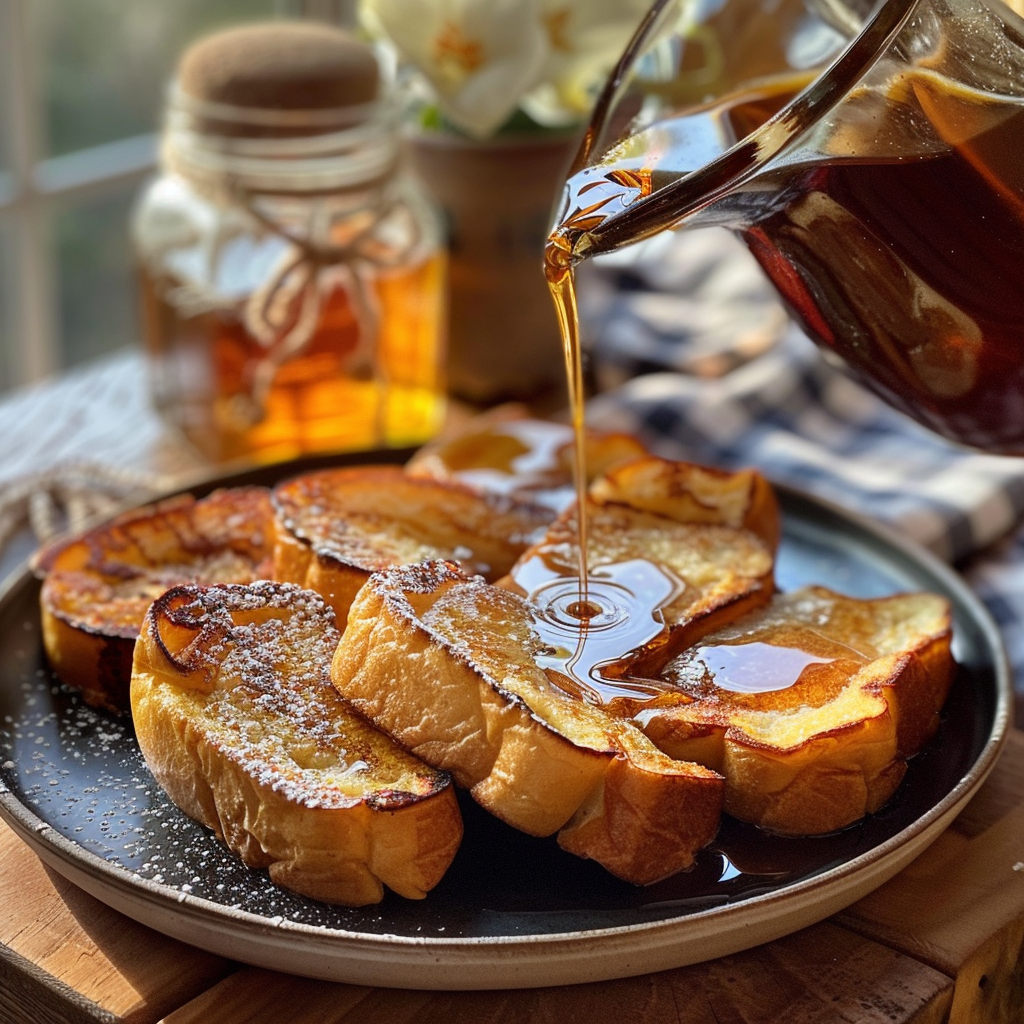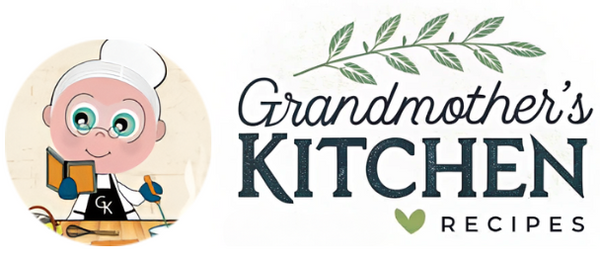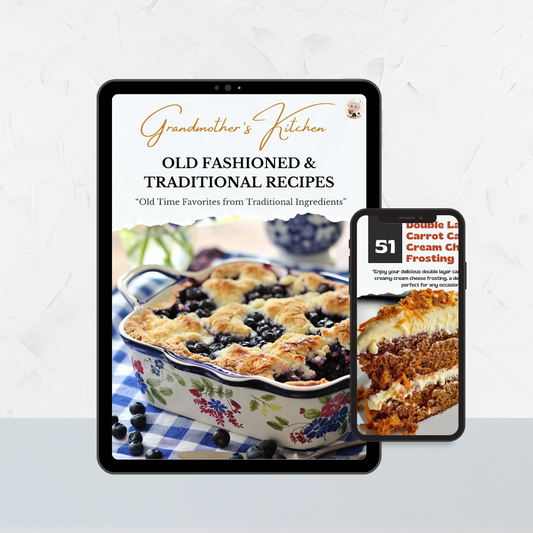Fluffy French Toast with Brioche - A Special Breakfast Treat

Share
French Toast Is A Treat In Our House Reserved For Special Breakfasts
There’s something about French toast that just feels like a treat, even though it’s so simple to make. I’ve always loved how it turns a few basic ingredients into something special. What’s even better is that it’s a sneaky way to get some good nutrition into my family, especially those who aren’t too keen on eggs. French toast wraps all that eggy goodness in a crispy, golden exterior, making it hard for anyone to resist. Eggs are little powerhouses of nutrition, packed with protein, vitamins, and minerals like B12, which is great for energy, and choline, which supports brain health. So, when you’re serving up French toast, you’re not just giving your family a delicious breakfast—you’re also giving them a nutritious start to the day. And when you drizzle on some pure maple syrup or a bit of natural honey, it feels like a wholesome, balanced meal. We reserve French toast for special breakfasts, like weekends or holiday mornings, which makes it all the more enjoyable.
Did You Know?
French Toast, also known as "pain perdu" in French, means "lost bread" because it's a great way to use up stale or day-old bread. This dish has been enjoyed since Roman times and appears in various forms in many cultures around the world. In France, it's often served as a dessert rather than breakfast!
Yield: 4 servings
Ingredients:
4 large eggs
1 cup milk
1 teaspoon pure vanilla extract
1/2 teaspoon ground cinnamon
8 slices of brioche or challah bread
2 tablespoons butter
Instructions:
Prepare the Batter:
In a large bowl, whisk together the eggs, milk, vanilla extract, and cinnamon.
Personal Tip: Let the kids help with the whisking—it’s a fun way to get them involved in the kitchen.
Dip the Bread:
Heat a non-stick skillet over medium heat and melt 1 tablespoon of butter. Dip each slice of bread into the egg mixture, ensuring both sides are coated.
Personal Tip: Use a fork or tongs to dip the bread to avoid messy fingers.
Cook the Toast:
Place the coated bread slices onto the skillet and cook until golden brown, about 2-3 minutes per side. Add more butter as needed for additional batches.
Personal Tip: Don’t overcrowd the pan—this helps ensure each slice cooks evenly.
Serve:
Serve warm with maple syrup, fresh fruit, or a dusting of powdered sugar.
Personal Tip: Warm up the syrup slightly before serving; it makes pouring easier and enhances the flavor.
Nutritional Information (Per Serving):
Calories, 250, Protein, 10g, Carbohydrates, 30g, Fiber, 1g, Net Carbohydrates, 29g, Fat, 10g, Saturated Fat, 4g, Cholesterol, 150mg, Sodium, 350mg, Sugars, 6g, Glycemic Index, Medium
Kitchen Tips, Great Ideas, How to Save Money
-
Choosing Bread: Day-old bread works best as it absorbs the egg mixture without becoming too soggy. Try using brioche, challah, or any sturdy bread for a richer flavor. Stale bread not only saves money but also results in a better texture for your French toast.
-
Flavor Variations: Add a pinch of nutmeg or a splash of orange juice to the batter for a different twist. You can also mix in a bit of cocoa powder for chocolate French toast or pumpkin spice for a seasonal version.
-
Serving Ideas: Top with a variety of fresh fruits like strawberries, blueberries, or bananas to add natural sweetness and color. You can also sprinkle nuts or seeds for added crunch and nutrition.
-
Saving Leftovers: French Toast can be frozen. Cool completely, then freeze in a single layer. Reheat in a toaster or oven. This is a great way to have a quick breakfast ready for busy mornings.
-
Reducing Sugar: Opt for sugar-free syrup or fresh fruit toppings instead of powdered sugar to reduce the overall sugar content. You can also use natural sweeteners like honey or agave syrup.
-
Using Stale Bread: This recipe is perfect for using up leftover bread, reducing food waste. Make it a habit to save any bread that's about to go stale for future French toast breakfasts.
-
Healthier Options: Use whole-grain bread and skim milk to make a healthier version of this classic dish. Whole grains add fiber and nutrients, making your meal more filling and nutritious.
-
Batch Cooking: Make a large batch and keep warm in the oven until all pieces are cooked. This is great for serving a crowd and ensures that everyone gets hot French toast at the same time.
-
Butter Alternatives: Use coconut oil or a butter substitute if you're looking to reduce saturated fat. Coconut oil adds a unique flavor and is a healthier fat alternative.
-
Cost-Saving Tips: Buy bread in bulk when on sale and freeze what you don't use immediately. Using store-brand milk and eggs can also help reduce costs without compromising quality. Consider making your own vanilla extract to save money and add a personal touch to your recipes.
The Real Deal with Maple Syrup
There’s just something about real maple syrup that can’t be beat. Yes, it’s a bit pricier than those synthetic syrups, but the flavor is so much richer and more complex. Real maple syrup is made by boiling down the sap of maple trees, primarily found in Canada and the Northeastern United States. It’s a natural sweetener that contains antioxidants, vitamins, and minerals like manganese and zinc. Unlike synthetic syrups that are often made from corn syrup and artificial flavoring, pure maple syrup has no additives—just the real deal. It’s not only better for you, but it also adds an authentic, deep flavor that pairs perfectly with French toast. And while it might cost a bit more, a little goes a long way, making it a worthwhile investment for those special breakfasts.


